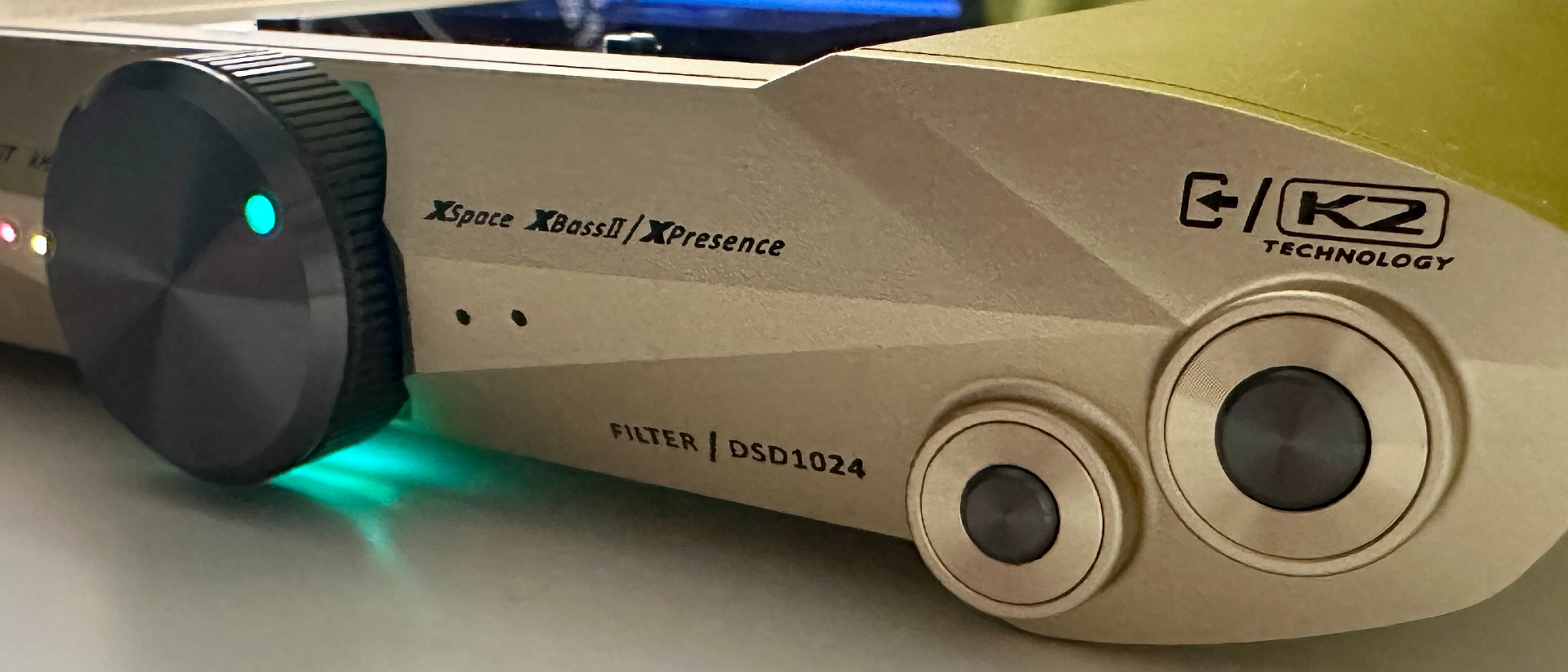TechRadar Verdict
It’s not cheap, and it’s not overtly portable – but the iFi iDSD Valkyrie is a brilliantly accomplished headphone amp/DAC and an interesting looker to boot. If you can justify the outlay to yourself (and/or your bank manager), you absolutely have to hear it.
Pros
- +
Staggeringly complete, detailed and informative sound
- +
Allows the end user a huge amount of input into performance
- +
Striking design and exemplary build quality
Cons
- -
Can be pushed to sound over-processed
- -
A pig’s ear in ergonomic terms
- -
Nothing like as portable as iFi seems to think it is
Why you can trust TechRadar
iFi iDSD Valkyrie: Two-minute review
iFi is a company that seldom goes anything other than ‘all-in’ – and with the new iDSD Valkyrie headphone amp/DAC it’s decided to try and make the best ‘portable’ headphone amp/DAC it possibly can.
‘Portable’ is a relative term, of course, and not only is the Valkyrie’s portability debatable when considering including it in our roundup of the best portable DACs, but the idea that you’d want to carry around a device you’ve spent £1699 (or equivalent) on is perhaps an odd one too. But for desktop or full system use, this iFi has an awful lot going for it.
And that’s the case no matter if you’re talking about design, build quality, the standard of finish or the way it sounds. It’s an individual looker, for sure, and it is unquestionably built to last. And when it’s working on your raw digital audio files, the results can be almost humbling – this is an extraordinarily detailed, precise and yet entertaining listen. It’s real ‘iron fist in velvet glove’ stuff the Valkyrie trades in – it’s controlled, energetic, insightful and, above all, musical. And that last word especially is by no means a given, even if you’re spending an arm and a leg.
For some, the seemingly limitless options to fiddle with the filtering, upscaling and processing of digital audio information might seem a bit daunting. For others, the idea that iFi is leaving the end user to have such a big say in the ultimate sound will seem like an admission that it doesn’t quite know what ‘best’ sounds like. For the rest of us, though, the iDSD Valkyrie will be a source of endless fascination as well as of enjoyment.
iFi iDSD Valkyrie review: Price and release date
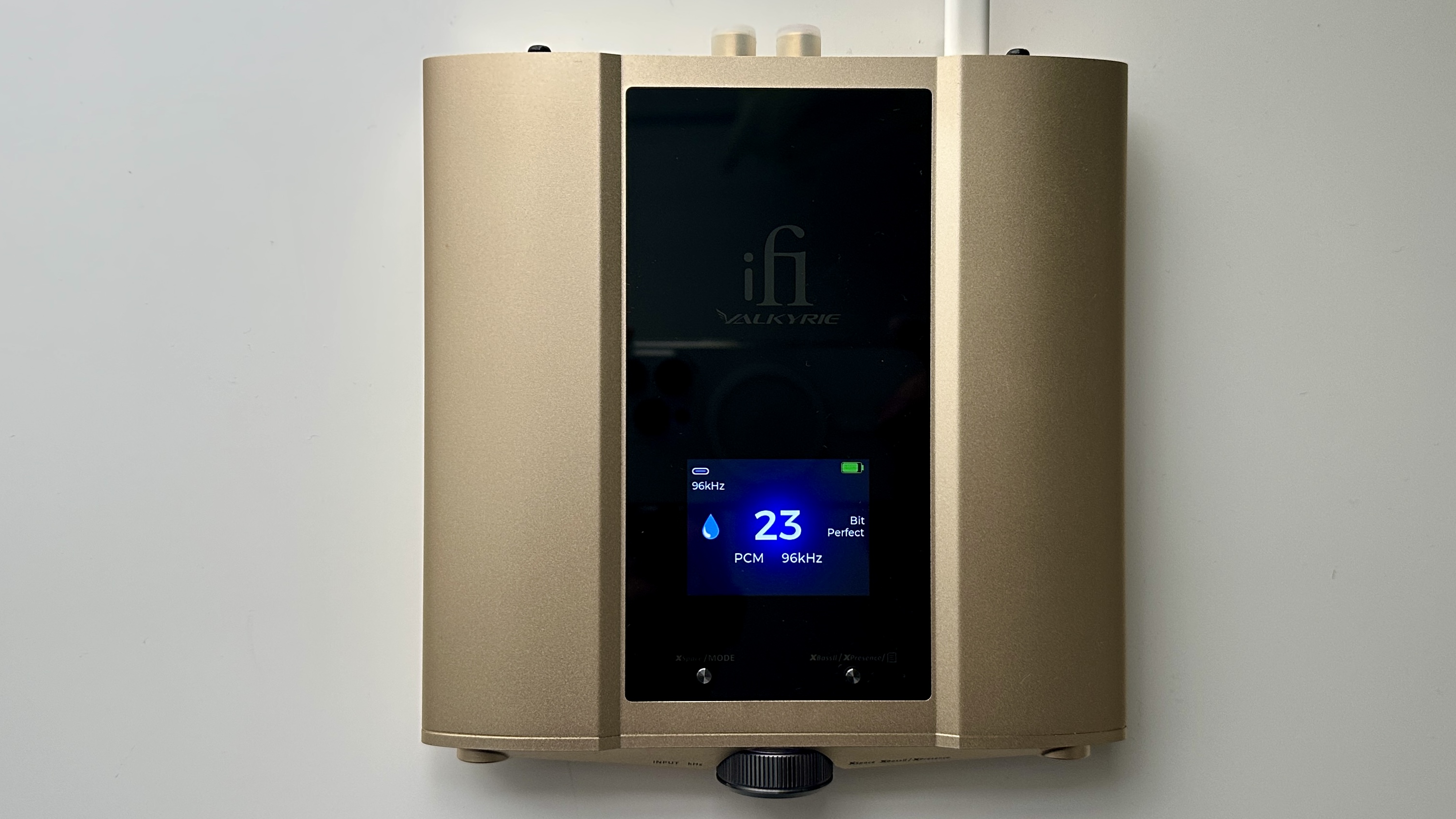
- Released of March 25, 2025
- Priced $1,699 / £1,699 / AU$2,999 (approx.)
The iFi iDSD Valkyrie launched on March 25, 2025, and it costs the same £1699 now as it did then. In the United States it will set you back a slightly more palatable $1699, while in Australia it goes for AU$2999 or something very like it.
I don’t think I will be startling anyone when I observe that this is quite a lot of money for a portable (or, as iFi prefers, ‘transportable’) DAC/headphone amp. Really, the only alternative of any profile that’s contesting the same area of the market is Chord’s equally wilfully named Hugo 2 - which means the Valkyrie is competing against at least one hugely accomplished rival…
iFi iDSD Valkyrie review: Features
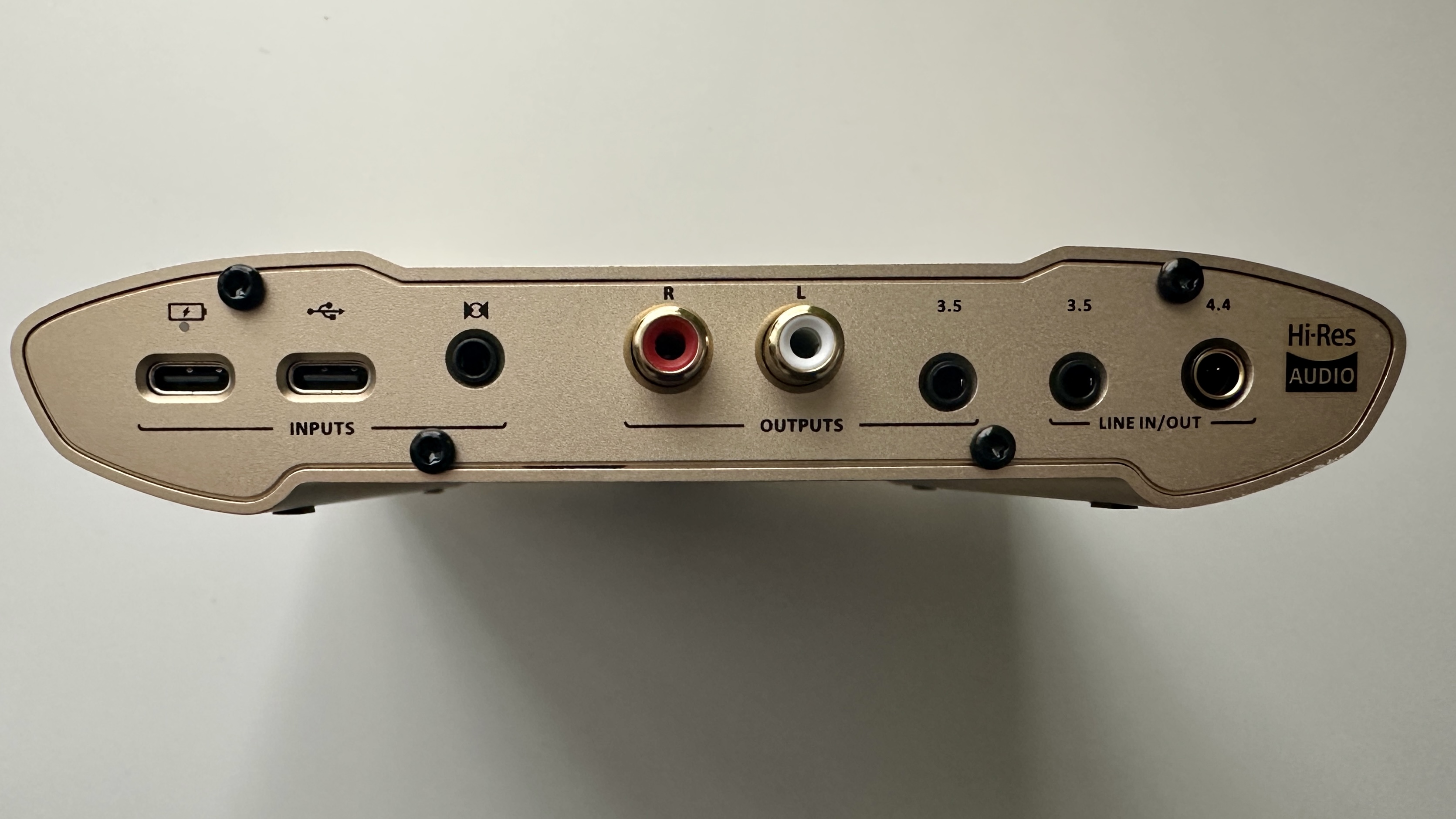
- Quad Burr-Brown PCM1793 DACs
- Numerous processing options
- 20000mAh battery power for 18 hours of constant operation
Yes, there are three headlines as regards ‘features’ just above here – but in all honesty I could have chosen from quite a few others. ‘A trowel’ is too small an implement to indicate what iFi has used to lay it on with here.
I have to start somewhere, though, so I may as well start with battery power. There are four batteries fitted to the Valkyrie which means it will run quite happily for as much as 18 hours before it needs charging – and its quick-charge facility means it can be brimmed inside three hours.
Getting digital information into the Valkyrie and decoded analogue information out again can be achieved in quite a number of different ways, but what happens to it in between is subject to quite a lot of user-defined variation. Fundamentally, digital audio stuff is given the once-over by a quartet of Burr-Brown PCM1793 DACs, but they’re operating in conjunction with an FPGA (field programmable gate array) that allows a bewildering number of processing, filtering and upscaling options to be brought to bear if you so desire.
There are six filtering options, from the light-touch ‘bit perfect’ to the heavy-handed ‘apodising’ and points in between – upsampling to resolutions way beyond the native resolution of the incoming signal can be facilitated this way. PCM and DSD files can be upsampled to DSD512 or a colossal DSD1024, which means incoming content can have its sample rate adjusted in quite a few ways.
And not for the first time where one of its more upmarket products are concerned, iFi has included JVC Kenwood’s ‘K2’ processing that was originally developed back when 16bit/44.1kHz compact disc standard ruled the roost – it intends to help restore information that might have disappeared during the original remastering from analogue to digital. And naturally enough the upgraded ‘K2HD’ that reflects the more recent move to hi-res content is included too.
As well as the physical digital and analogue inputs, the Valkyrie is fitted with Bluetooth 5.4 wireless connectivity – and it’s compatible with top-of-the-shop, state-of-the-art aptX Lossless codec compatibility too. iFi has been demonstrating its impeccable facility with Bluetooth for quite some time now, and the implementation of the as-good-as-it-gets standard bodes very well indeed.
Features score: 5 / 5
iFi iDSD Valkyrie review: Sound quality
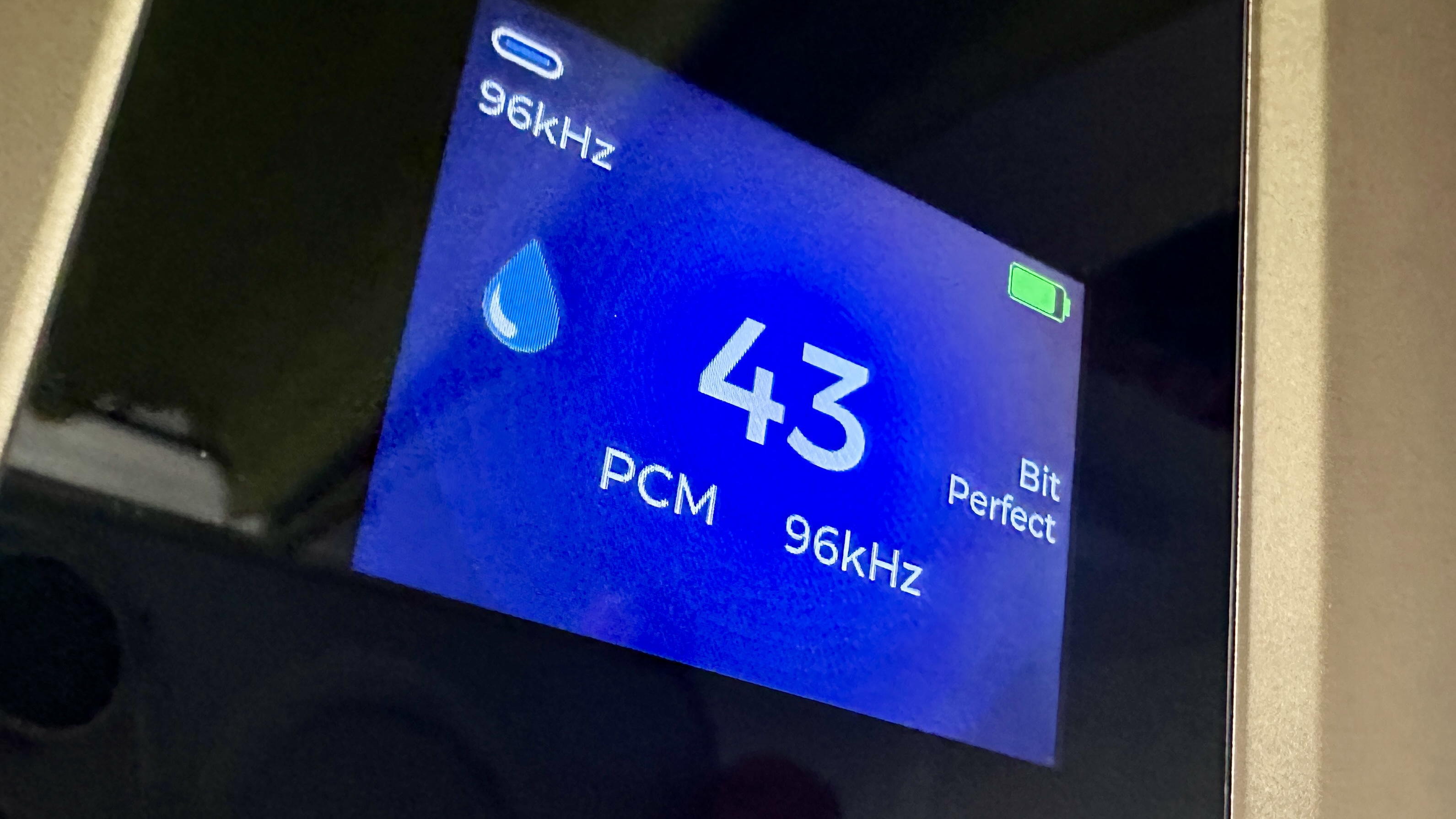
- Lavishly detailed and insightful
- Open, spacious and well-defined
- Your favourite sonic balance is in there somewhere…
I’m going to have to assume you’ve taken your investment seriously, and have spent as long as it takes to find the sonic balance within the Valkyrie’s endless permutations that suits you best. During this journey you'll have discovered that it’s possible to make the iFi sound overprocessed and unnatural – but, of course, this is what ‘trial and error’ is all about.
Once you get where you want to be, though, there’s very little that’s erroneous about the way the Valkyrie deals with your digital audio information. It’s only slightly perturbed by very compressed, low-resolution content, and it doesn’t at all mind about the type of music you like to listen to. It’s forgiving of partnering equipment, no matter if it’s headphones or a full-on system. And it is capable of peering into a recording on a forensic level and returning with an absolute stack of relevant information that it is only too willing to impart.
A recording like Nick Drake’s Which Will that’s stored as a 24bit/96kHz FLAC file illustrates a lot of what is so enjoyable and so impressive about the Valkyrie. Its midrange fidelity is, quite frankly, stunning. There’s an immediacy about the vocal performance here, an utterly natural tonality, that makes every aspect of the singer’s performance – attitude, emotional state, character, phrasing, breath-management, you name it – completely apparent. And, what’s more, makes it sound natural, unforced and alive.
The spare instrumentation of the recording is equally alive – the tonal balance the iFi strikes is convincing, and the stage on which this performance occurs is confidently defined. Frequency response is smooth and even, attention to harmonic detail is fanatical, and there’s the sort of unity and togetherness of presentation that I more readily associated with the vinyl format.
A 24bit/48kHz FLAC file of James Holden’s Common Land allows the Valkyrie to demonstrate martial low-frequency control and an unequivocal way with rhythmic expression. Bass sounds are rapid, loaded with variation, dynamic as can be, and with the sort of straight-edged attack that means the tune just snaps. At the opposite end there’s substance to treble information that nicely balances out the bite and crunch the iFi brings, and again the Valkyrie observes the attack, the onset, of top-end sounds with complete attention.
I get the strong impression that the Valkyrie is able to bring the best from any partnering equipment no matter if it’s a system or a pair of headphones, and no matter how much or how little this equipment costs. Even if the digital audio information is getting into the machine via Bluetooth, the output is never less than coherent and convincing. Naturally if you decide you want to upsample a 320kbps MP3 file of The Roots’ Dynamite! to DSD1024 it’s possible to discern a process at work behind the actual sound you’re hearing - but you’ll appreciate that I’m taking things to extremes here.
Sound quality: 4.5 / 5
iFi iDSD Valkyrie review: Design
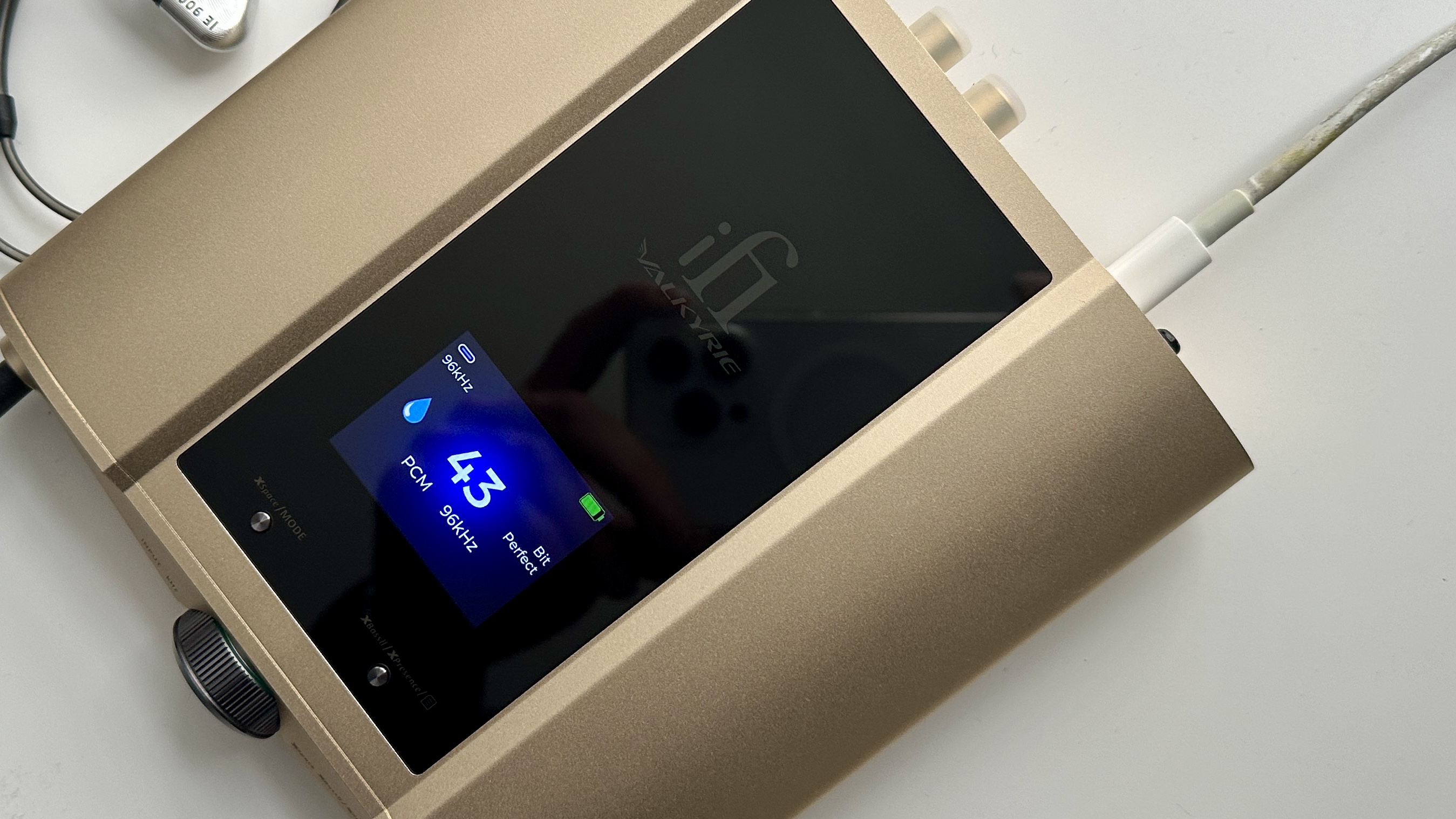
- Arrives in a large wooden box
- As winged as the name demands
- Superb standard of build and finish
You can’t suggest iFi hasn’t put the hard yards in where the design of the iDSD Valkyrie is concerned. This is a product that’s been designed to within an inch of its life. In some ways this ‘designing at all costs’ impacts on outright usability (as we shall see), but never let it be said iFi doesn’t offer a bit of visual drama to go along with all that performance.
So the Valkyrie arrives in a substantial wooden box that stretches the definition of the word ‘transportable’ more than somewhat. Inside is the device itself (a not insignificant 30 x 160 x 172mm [HxWxD] and 882g) along with a necessarily large (and unarguably beige) carry case, a selection of connection cables and adapters to cover every eventuality, and a mains adapter.
The device itself is dramatically angular in a manner, says iFi, that evokes "the majestic wings of a Valkyrie's horse" – which is ambitious, no two ways about it. And let’s face it, only by comparing it to a horse does the iDSD Valkyrie seem anything other than very large. I’ve been using the equally special iFI i DSD Diablo 2 as my reference headphone amp/DAC for a while now, and I used to think it was quite big. Not any more.
There’s no arguing with the standard of build and finish here, mind you. The fit is even, the panel gaps are very tight indeed, and there’s even a suggestion of tactility about the casework. Used as a system device in a domestic setting or on a desktop it’s a singular and diverting looker.
Design score: 4.5 / 5
iFi iDSD Valkyrie review: Usability and setup
- Multi-function sockets and buttons
- Lilliputian labelling for these sockets and buttons
- Almost too much user input into setup
So yes, as I said: this determination to ensure the iDSD Valkyrie is Fully Designed has led to some compromises where usability is concerned. It has a fair few sockets and buttons on both sides and both ends – but in all honesty it could do with a few more, because too many of them are fulfilling more than one function.
For instance, on the rear panel there’s a USB-C socket for charging that quartet of batteries and another for data transfer. Then there’s a hybrid optical/coaxial 3.5mm digital input, and a pair of stereo RCA analogue outputs. After that there are two analogue connections – one is an unbalanced 3.5mm socket and the other a balanced 4.4mm alternative - and both of them function as both inputs and outputs.
Up front there’s another 4.4mm balanced analogue output – this one doubles as an output for MEMS headphones. There’s also another 3.5mm unbalanced analogue output, with a (relatively) large volume/mute control-cum-power on/off dial in the centre. A button that allows you to cycle through your numerous filter options and to initiate upsampling to DSD (512 or 1024) is adjacent to a button that deals both with input selection and turns K2 or K2HD processing on or off.
On the bottom of the chassis there’s the usual iFi ‘iEMatch’ switch for finessing output relative to the demands of your headphones, and on the top there are two little buttons dealing with available audio modes. One switches the ‘XSpace’ mode (designed to improve imaging) on or off, and also governs the three different types of power output levels, while the other gives access to ‘XPresence’ mode (for extra midrange grunt) and ‘XBass II’ mode (take a wild guess). It also allows you to access menus on the little screen on the top of the device, turning the volume control into a turn/push dial to navigate them.
When I suggested many of the sockets and buttons on the Valkyrie are overburdened, I really wasn’t joking.
And if you’ve read the ‘features’ section, then you’ll know that as the end user you have plenty of legwork to do before the Valkyrie is set up to your satisfaction in purely sonic terms. All of the sound modes, in conjunction with all of the filter options, allied to all of the processing and upsampling possibilities, mean it will take time and effort to get the point you deem optimal.
Usability and setup score: 3 / 5
iFi iDSD Valkyrie review: Value
Like almost everything that gets reviewed at techradar.com, the ‘value’ the iFi iDSD Valkyrie represents is subjective.
Is it ten times better than one of iFi’s own admirable little USB DACs that cost a tenth of the price or less. Of course it isn’t; gains at the very top of the food chain have always been incremental. But if you want what is approaching ‘ultimate’ where a product of this type is concerned, well, it’s going to cost you.
And don’t be in any doubt, the results here are profoundly impressive.
Value score: 4.5 / 5
Should I buy the iFi iDSD Valkyrie?
Attributes | Notes | Rating |
|---|---|---|
Features | Is it possible for a DAC too boast too many features? No, of course not | 5/5 |
Design | It's big for portable, but it is also beautiful | 4.5/5 |
Sound quality | Staggeringly agile and detailed, to an almost humbling degree – it simply isn't a fan of very compressed stuff | 4.5/5 |
Value | It's very expensive, but if you can justify the hefty outlay, you'll reap the benefits | 4.5/5 |
Buy it if...
You’re after a uncompromised headphone amp/DAC experience
When it comes to flexibility and – most of all – performance, there are very few alternative products around that can get close to the Valkyrie
You enjoy design for design’s sake
Does the Valkyrie have to look like this? No, it doesn’t - but the fact that a company has decided to make a product look as interesting as it sounds is to be applauded
You fancy a lot of say in the way your headphone amp/DAC sounds
So many options, so many combinations… it’s almost like being wholly in charge of the sound you get to experience
Don't buy it if...
You’re short of time
So many options, so many combinations… this is not a plug-and-play device by any means
You’re short of space on your desktop
I’m quite tidy when it comes to my work station, and yet I had to move things, straighten things and tidy things away to make space for the Valkyrie
You don’t see all that well
The word I’m going with to describe the labelling of inputs, outputs and controls on the Valkyrie is ‘miniscule’
iFi iDSD Valkyrie review: Also consider
The obvious rival to the iFi iDSD Valkyrie, and the reigning ‘madly expensive and oversized headphone amp/DAC’ champion is the Chord Hugo 2 – which can be found for around the same fee as the Valkyrie these days (but launched at £1,800 / $2,175 / AU$4,500). In its own way it’s just as oddball a product as the iFi – it’s been eight years since it launched, and I’m no closer to understanding what each of the color combinations that constitute a user interface actually mean. But it’s a staggeringly accomplished performer nonetheless.
How I tested the iFi iDSD Valkyrie
I connected the iDSD Valkyrie to a MacBook Pro (running Colibri software) via its USB-C socket, and I also connected it via its digital optical input to a Rega Apollo CD player.
I connected a FiiO M15S digital audio player wirelessly using the LDAC codec. I used a pair of Sennheiser IE900 in-ear headphones via their 4.4mm balanced connection as an output, along with a pair of Bowers & Wilkins Px8 via the 3.5mm unbalanced output – and I also connected the Valkyrie to a main reference system (Naim amplification, Bowers & Wilkins loudspeakers) using its RCA outputs. And then I fed it a lot of music, of different file types and sizes, and of different genres, in an effort to find something the iFi doesn’t excel at.
And then I had to accept that ‘excel’ is simply what the iFi iDSD Valkyrie does.
- First reviewed: May 2025
- Read TechRadar's reviews guarantee
Simon Lucas is a senior editorial professional with deep experience of print/digital publishing and the consumer electronics landscape. Based in Brighton, Simon worked at TechRadar's sister site What HiFi? for a number of years, as both a features editor and a digital editor, before embarking on a career in freelance consultancy, content creation, and journalism for some of the biggest brands and publications in the world.
With enormous expertise in all things home entertainment, Simon reviews everything from turntables to soundbars for TechRadar, and also likes to dip his toes into longform features and buying guides. His bylines include GQ, The Guardian, Hi-Fi+, Metro, The Observer, Pocket Lint, Shortlist, Stuff T3, Tom's Guide, Trusted Reviews, and more.
You must confirm your public display name before commenting
Please logout and then login again, you will then be prompted to enter your display name.
